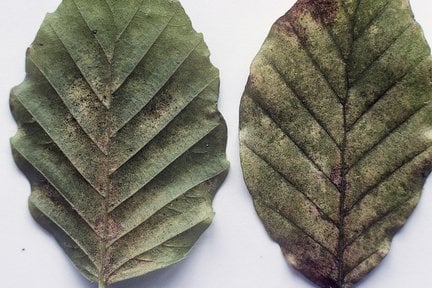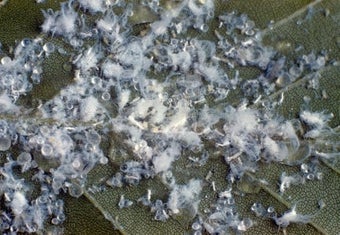
Quick facts
Common name - Beech red spider mite
Scientific name - Eotetranychus fagi
Plants affected - Beech (Fagus sylvatica)
Main symptoms - Extensive bronzing of foliage
Most active - Spring to autumn
What is beech red spider mite?
Spider mites are members of the Acari (mite) family Teranychidae. They generally live on the undersides of leaves, where they spin webs and cause damage by puncturing plant cells to feed. Some spider mites feed on a broad range of plants others have a limited host range.
Beech red spider mite (Eotetranychus fagi) is specific to beech (Fagus sylvatica) and was first discovered in Britain in 2004. Adult mites are less than 1 mm in length and are normally a pale greenish yellow rather than red as the name suggests.
Symptoms
Beech red spider mite can cause fine pale yellow mottling (bronzing) of the upper leaf surface which is usually concentrated along larger leaf veins. The undersides of leaves can be covered with black excrement spots and littered with cast mite skins and egg shells giving a dusty appearance.
Beech grown as a hedge tends to be more vulnerable to this mite than standard trees.
The mite is likely to have several generations during the summer months and will overwinter on the as eggs.
Management
Although the mottling caused by the mites can be considered unsightly, it is unlikely to affect the long term health of affected trees and so it should be tolerated. This is fortunate as the there are no other mangement measures available to home gardeners.



